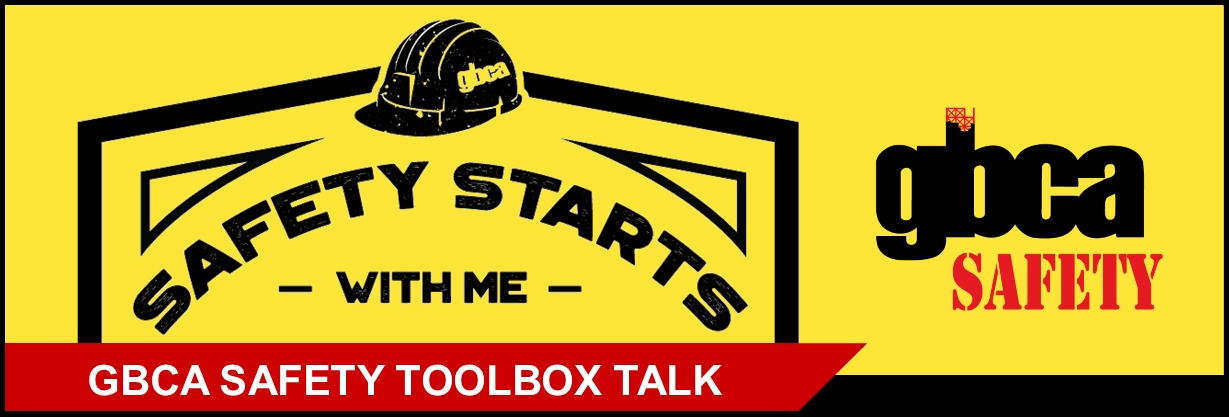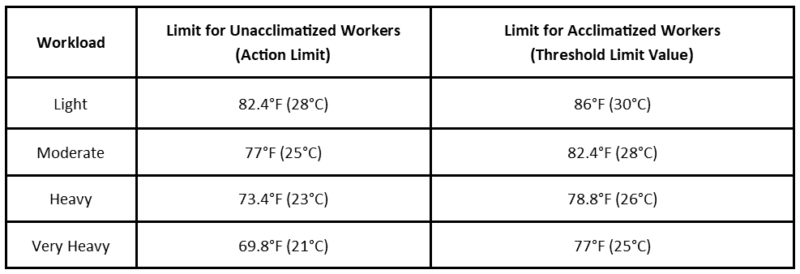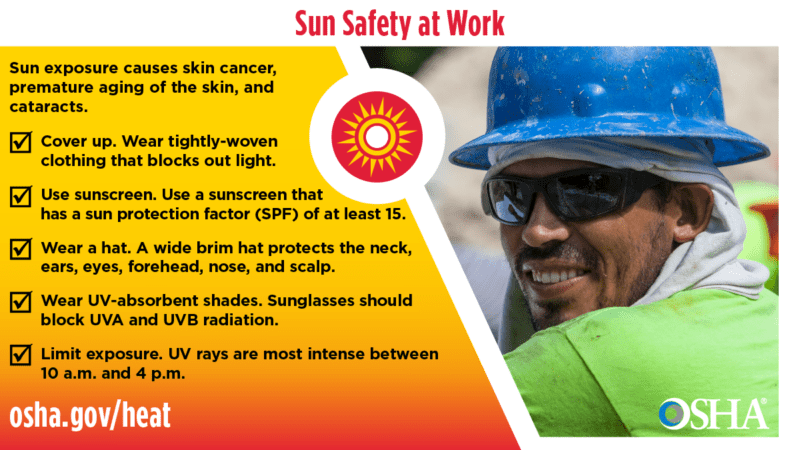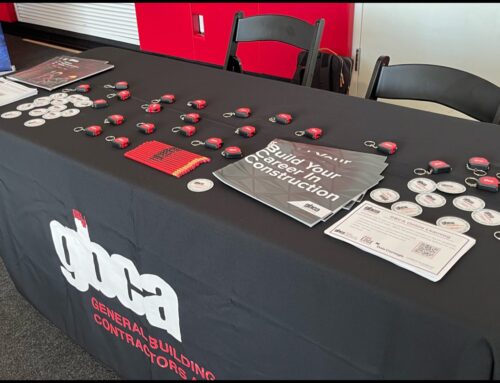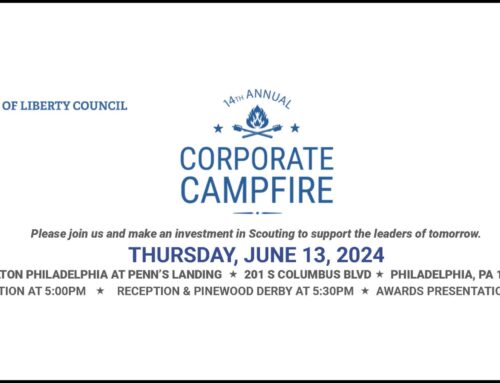This GBCA Safety Toolbox Talk discusses OSHA’s Water. Rest. Shade. campaign, what employers must do, and what workers can do to protect themselves while working in the heat. Click below to download the Toolbox Talk as a multi-page handout.
Water. Rest. Shade.
Whether indoors or outdoors, heat hazards may lead to serious illnesses, injuries, or death. OSHA’s Water. Rest. Shade. campaign encourages early interventions by employers to prevent illnesses and deaths among workers in high heat conditions. Early interventions include, but are not limited to, implementing water, rest, shade, training, and acclimatization procedures for new or returning employees.
WATER.
Employers should provide cool water for workers to drink. Proper hydration is essential to prevent heat-related illness. Water or other fluids provided by the employer should be cool and in a location that is familiar to the workers: near the work, easy to access, and in sufficient quantity for the duration of the work.
- For short jobs, cool potable water is sufficient. You should drink at least one cup (8 ounces) of water every 20 minutes while working in the heat not just if they are thirsty.
- For longer jobs that last two hours or more, employers should provide electrolyte-containing beverages such as sports drinks. You lose salt and other electrolytes when you sweat. Substantial loss of electrolytes can cause muscle cramps and other dangerous health problems.
- Do not rely on feeling thirsty to prompt yourself to drink. You should drink on a regular basis to maintain hydration throughout your shift.
Certain personal protective equipment (e.g. certain types of respirators and impermeable clothing) can increase the risk of heat-related illness. They may cause your body temperature to rise and may cause you to sweat more.
REST.
When heat stress is high, workers should take regular breaks. The length and frequency of rest breaks should increase as heat stress rises. In general, workers should be taking hourly breaks whenever heat stress exceeds the limits shown below:
Table 2. Heat stress recommendations, adapted from NIOSH and ACGIH guidelines.
Table 2 under Determination of Whether the Work is Too Hot/Clothing Adjustment Factors section
on OSHA’s Heat Hazard Recognition page.
How Long Should Breaks Last?
Breaks should last long enough for workers to recover from the heat. The length of a break depends on several factors including environmental heat (wet bulb globe temperature—WBGT) and the worker’s physical activity level, as well as the individual worker’s personal risk factors. The location of the breaks also matters. If workers rest in a cooler location, they will be ready to resume work more quickly. Breaks should last longer if there is no cool location for workers to rest.
Do not skip breaks. In hot conditions, skipping breaks is not safe! Employers should make sure that workers rest during all recommended break periods.
Both NIOSH and ACGIH have recommendations on appropriate lengths of work and rest cycles as a function of the workload and the WBGT (ACGIH 2017, NIOSH 2016).
SHADE.
Take your break and rest in a cool, shaded location to recover from the heat.
Employers should provide cool, shaded areas for breaks.
Outdoors, workers should rest in a shady area, an air-conditioned vehicle, a nearby building or tent, or an area with fans and misting devices.
Indoors, workers should rest in a cool or air-conditioned area away from heat sources such as ovens and furnaces.
Remember to record the attendees of your toolbox talk!
Access GBCA’s full library of toolbox talks:

